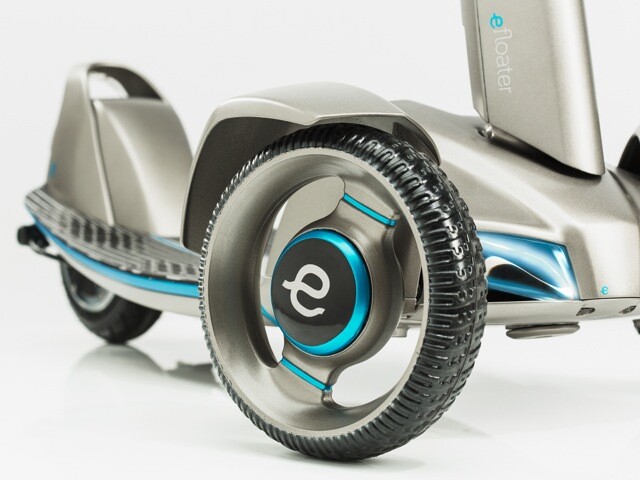Aiming to keep urban commuters light off their feet, Hamburg/Singapore-based Floatility is developing an electric scooter made from a series of light, sturdy composites supplied by the material masters at BASF. The startup aims to offer urban networks of e-floaters as a "last mile" solution and will soon begin testing the idea out in its two base cities.
Rarely a week goes by in which we don't see some new electric scooter, bike or personal mobility device. Floatility's e-floater stands out from the pack not simply because it's the flavor of this week, but because of its light composite construction and a business plan that focuses on sharing, not retail distribution.
The e-floater is powered by a 250-watt motor that gives it a range of about 9.3 mi (15 km). It has front and rear lights and dual independent brakes. The onboard battery takes about two hours to charge.
In place of the tubular metal, bike-style frame often seen on scooters, more than 80 percent of the e-floater's build relies on plastics and composites, including several grades of BASF glass-reinforced Ultramid polyamide in the structural construction and Ultracom composite reinforcements. Those fancy-sounding materials help Floatility save weight, giving the scooter its namesake "float."

In a press release from earlier this year, BASF cited the e-floater's weight at less than 26.5 lb (12 kg), which doesn't make it the lightest electric scooter we've covered (the two-wheel folding ElectricMood, for one, weighs 22 lb/10 kg), but it does make it lighter than many e-scooters and mobility tools, including the INU (55 lb/25 kg), InMotion SCV (35 lb/16 kg) and BMW MiniSurfer concept (40 lb/18 kg). All of those designs also offer more range, though: ElectricMood (12 mi/19 km), INU (25 mi/40 km), InMotion SCV (19 mi/30 km), BMW MiniSurfer (up to 15 mi/25 km).
Floatility has designed the e-floater as a last mile solution that it sees fitting in to a pay-per-use sharing model connecting public transportation hubs with end user destinations. It plans to launch its first test networks in Hamburg and Singapore later this year.
Source: Floatility, BASF







